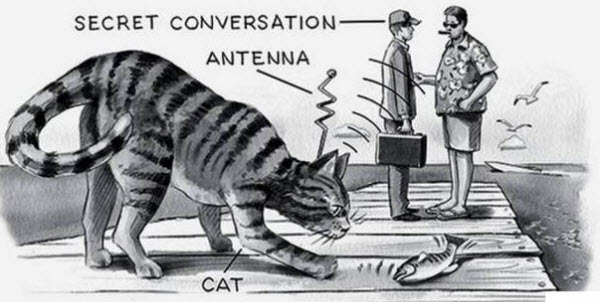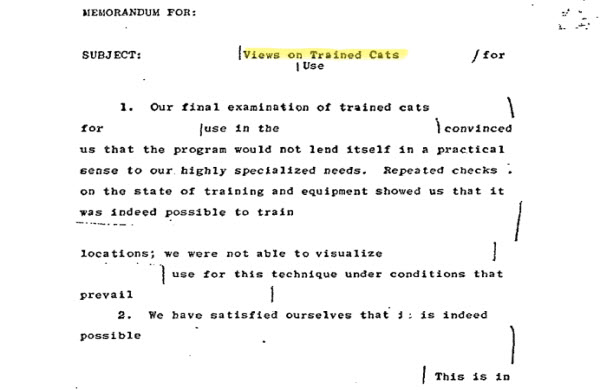The 1960s were one of the most intense periods of intelligence conflicts during the Cold War, especially between the United States and the Soviet Union. During this era, espionage activities reached new heights, sometimes taking forms that bordered on the absurd. Among the many unconventional projects overseen by the CIA were attempts at mind control through the controversial MK-Ultra program, as well as the recruitment and training of cats to act as spies. This feline-focused project, known as Operation Acoustic Kitty, is one of the strangest espionage stories of the Cold War, revealing the extent of creative (and sometimes ludicrous) lengths to which intelligence agencies would go.
The Concept of Acoustic Kitty
The core idea behind Operation Acoustic Kitty was to use cats to eavesdrop on conversations in strategic locations such as window sills, park benches, and trash cans. The CIA believed that these cats could be trained to listen in on conversations and transmit what they heard back to intelligence officers. The project was born after a CIA officer noticed the numerous stray cats wandering around a particular location while trying to listen in on a foreign leader. The presence of these animals, which no one seemed to pay attention to, sparked the idea of using them as inconspicuous spies. The natural curiosity of cats was seen as a potential asset; the officers theorized that a trained cat would instinctively move toward sounds of interest, making them ideal for eavesdropping on Soviet officials.

Turning Cats into Covert Agents
To bring this idea to life, the CIA enlisted the help of a veterinarian who performed a complex surgery on a cat, implanting a small radio transmitter at the base of its skull, a microphone in its ear canal, and a nearly invisible wire connecting the two along its fur. After the surgery, the cat underwent an extensive training program to learn to focus on specific sounds and ignore irrelevant noise. The concept was that the cat’s natural hearing capabilities, similar to the human cochlea, would allow it to filter out ambient sounds more effectively than traditional recording devices, which captured everything indiscriminately.
However, the project encountered several significant challenges. One of the primary issues was the battery life required for the recording and transmission devices. Given the small size of the cat, only very small batteries could be used, limiting the recording time. Additionally, there was the problem of the cat’s natural behavior; when hungry, the cat would instinctively abandon its post to search for food, compromising the mission. While the team managed to overcome some of these issues, the documents detailing the project do not specify exactly how these obstacles were addressed. Over five years of development were spent on this project because equipping a cat with advanced technology was no easy task in an era when tape recorders were reel-to-reel, and computers occupied entire rooms. Moreover, the cats needed to appear completely natural, without any visible bumps or suspicious scars.
A Mission Gone Awry
After numerous tests and preparations, the first mission of Operation Acoustic Kitty was set. The target was to listen in on two men in a park outside the Soviet compound in Washington, D.C. When the cat was released from a van to begin its assignment, an unexpected tragedy occurred—a taxi struck and killed the cat almost immediately, bringing the operation to a sudden and disastrous end.

Following this failure, the project was officially terminated in 1967, after the CIA had spent nearly $20 million with no viable results. The story of Operation Acoustic Kitty came to light in 2001 when declassified documents were released by the National Security Archive. The documents, despite describing the operation as having achieved some level of success, concluded with the recommendation that, after a thorough evaluation of the trained cats, the program was deemed impractical for meeting the agency’s needs. The revelation of this project was met with widespread disbelief and ridicule, serving as a curious footnote in the annals of Cold War espionage history.
